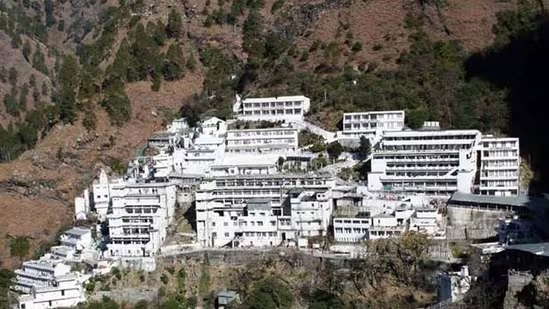
Why Vaishno Devi Matters
Perched high in the Trikuta Hills of Jammu & Kashmir, the Vaishno Devi Temple is more than just a shrine—it is the embodiment of India’s devotion, faith, and cultural continuity. Every year, millions undertake this spiritual journey, braving terrain and weather, driven by an unshakable belief that Mata Vaishno Devi fulfills the deepest wishes of her devotees.
Mythology and Origins of Faith
Vaishno Devi is believed to be a manifestation of Mahalakshmi, Mahakali, and Mahasaraswati—the trinity of Shakti. According to legends from the Mahabharata, Arjuna meditated at this very site before the Kurukshetra war, seeking the goddess’s blessings. The modern-day pilgrimage gained prominence when a humble Brahmin, Pandit Shridhar, received a divine vision of the goddess in the 14th century, leading to the discovery of the sacred cave.
The Sacred Trek
The yatra begins at Katra, a bustling base town 42 km from Jammu. From here, pilgrims undertake a 12 km uphill trek to reach the Bhawan. Along the path, faith is visible in every step—devotees walk barefoot, chant hymns, and some even crawl in devotion. For those seeking comfort, facilities like ponies, palkis, electric vehicles, helicopters, and ropeways are available. At the holy cave, the goddess is worshipped in the form of three pindis (rock formations), symbolizing Saraswati, Lakshmi, and Kali.
A Pilgrimage of Millions
The Vaishno Devi shrine draws 8–9 million pilgrims annually, making it one of the most visited Hindu temples in India after Tirupati Balaji. During Navaratri, the number of visitors swells dramatically, with chants of “Jai Mata Di” echoing across the Trikuta hills.
Festivals and Celebrations
- Navaratri: The most important festival, celebrated with nine days of prayers, bhajans, and elaborate rituals.
- Diwali: The cave and temple complex are lit with thousands of lamps, creating an aura of divine energy.
Governance and Modern Facilities
Since 1986, the Shri Mata Vaishno Devi Shrine Board has been responsible for managing the temple. It has significantly modernized infrastructure, adding accommodation, hospitals, sanitation, and food services while ensuring the sanctity of the shrine remains untouched.
Recent Developments and Challenges
In August 2025, heavy rains triggered landslides on the pilgrimage route, leading to the tragic loss of over 30 lives and the suspension of the yatra. Train services to Katra were disrupted, and safety advisories were issued. Despite such challenges, the shrine continues to symbolize resilience, with authorities working swiftly to restore facilities and ensure safe pilgrimages.
Symbol of Hope and Faith
For millions, Vaishno Devi is not just a temple but a source of strength, blessings, and miracles. Stories of wishes fulfilled, illnesses healed, and lives transformed are interwoven into the fabric of this sacred place. Devotees often say that reaching the cave is not merely a journey of the body, but a test of faith and the soul.
Legacy
Even as modern India marches ahead, the spiritual magnetism of Vaishno Devi remains timeless. The shrine is not only a religious destination but also a cultural anchor that binds generations. It stands as a beacon of devotion, resilience, and divine grace—an eternal reminder that in the lap of the Himalayas, faith continues to move mountains.
FOR MORE BLOGS –beyondthepunchlines.com

 Add to favorites
Add to favorites







